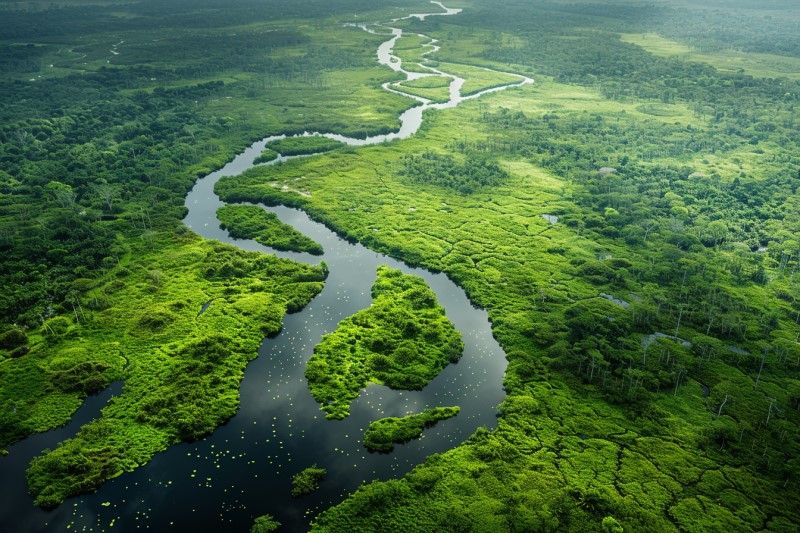KidZone Habitats
Human Impact on Habitats
Our beautiful Earth is like a giant puzzle, with each piece representing a unique habitat that animals, plants, and humans call home. Just as we care for our homes, it's important to recognize how our actions, big and small, can affect the world's diverse habitats. Let's dive deeper into understanding the complex relationship between humans and nature.

The Challenges We Pose: Sometimes, our actions can create challenges for habitats. For instance, when we cut down vast areas of forest for timber or to make space for farms and cities, a process known as deforestation, we're removing the precious homes and food sources for countless creatures. Similarly, our factories, cars, and even our homes can produce pollution that travels through the air and water, making it tough for wildlife to thrive. Pollution can come in many forms, from the smog that clouds the sky to the plastic waste that finds its way into the oceans, harming marine life.

Another challenge is climate change, driven by the buildup of greenhouse gases in our atmosphere. This can lead to warmer temperatures, melting ice, and rising sea levels, altering habitats and making it difficult for many species to survive. Even activities like mining and drilling for natural resources can disrupt the land and water, affecting the delicate balance of ecosystems.
The Positive Steps We Can Take: But here's the good news - we have the power to make positive changes, too! By creating protected areas like national parks and wildlife reserves, we give plants and animals safe spaces to live, away from the hustle and bustle of human activity. Conservation efforts, like breeding programs for endangered species and the restoration of damaged ecosystems, can help bring nature back from the brink.
We can also adopt more sustainable ways of living, like using renewable energy sources such as wind and solar power, which are kinder to the environment. Reducing, reusing, and recycling our waste can significantly cut down on pollution. Simple actions, like choosing to walk or bike instead of driving, can reduce our carbon footprint and help combat climate change.
Education plays a key role, too. By learning more about the environment and teaching others, we can spread awareness and inspire more people to act. Community initiatives, like local clean-up days and tree-planting events, bring people together to improve their surroundings and create healthier habitats for everyone.
And let's not forget about the small creatures that make a big difference, like bees and butterflies. By planting gardens with native flowers, we provide these important pollinators with food and shelter, helping to ensure that we have fruits and vegetables to eat.

In every action we take, we have the opportunity to positively impact the habitats around us. By making thoughtful choices and working together, we can protect and preserve the incredible diversity of life on our planet. Our Earth is a shared home, and by taking care of it, we ensure a brighter, healthier future for all its inhabitants. Let's be the stewards of our planet, nurturing and protecting the web of life that connects us all.
Other links you might enjoy:
- Story: Cora the Sea Sprite
- DLTK's Earth Day Activities (crafts, coloring, recipes and more)
- Earth Day Coloring Pages - includes different plant and animal species